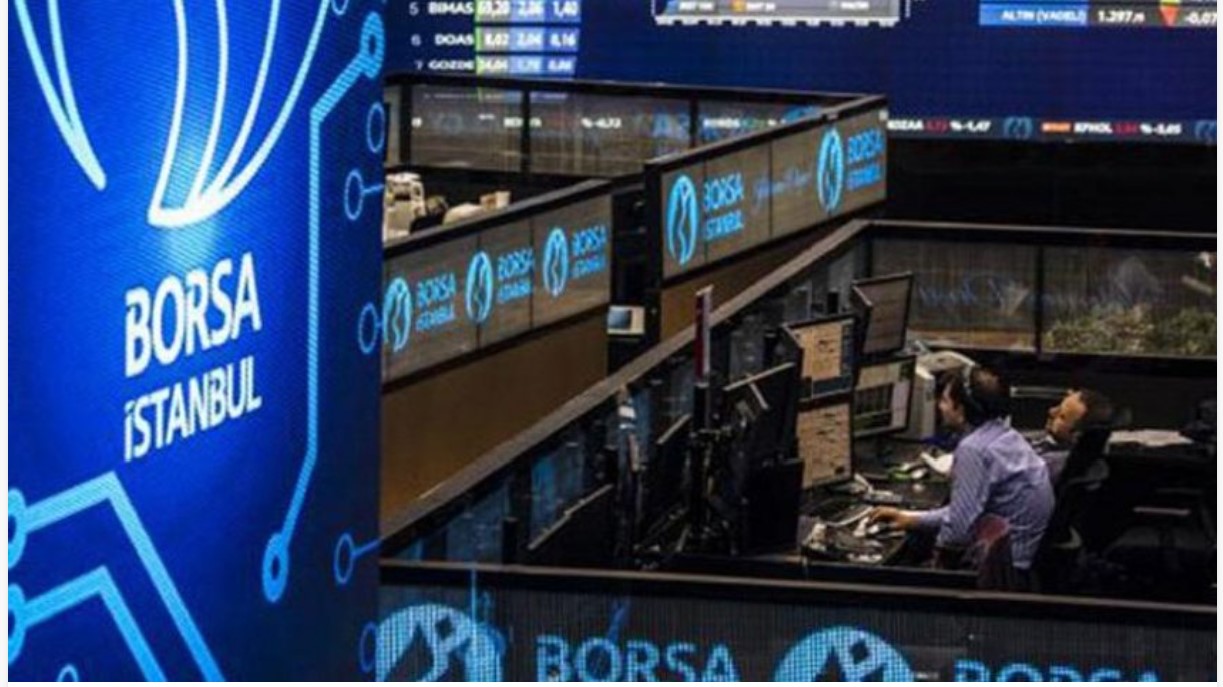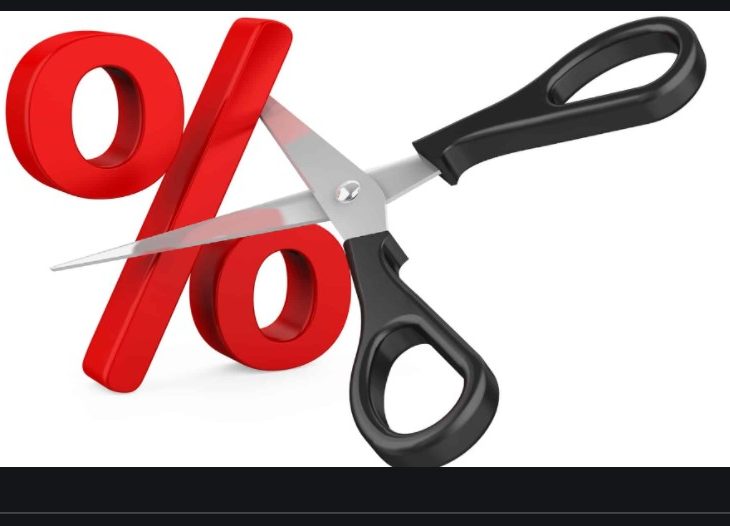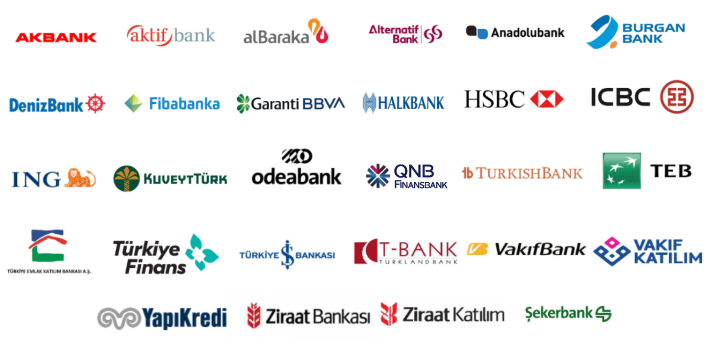Turkish Equities Strategy: State of Turkish markets amidst global recession pricing
 bist3
bist3
Risk appetite remains sour as the global recession debate intensifies
- In these early phases of the second half of the year, the debate on whether or not the global economy is heading towards a recession remains the main topic of the markets. The debate essentially stems from the fact that central banks, particularly the FED, are forced to increase the pace of tightening as inflation continues to peak along with rising commodity prices after the explosion of the Russia-Ukraine war.
- Although commodity prices have recently retreated from their peak levels with the expectations of a slowdown in global growth, the ongoing Russia-Ukraine war keeps upside risks alive, especially for energy and food commodities. Global growth projections are being revised downwards to the tune of 1.5-2.0% points compared to the beginning of the year, while expectations of a recession/stagflation in 2023 (or even in late 2022) intensify day by day. Amidst such uncertainty, markets continue to remain exposed to heightened volatility and losses as the current period is somewhat likened to the stagflation era of the 1970s.
- U.S. stock markets continued to trend down in 2Q, with the total losses reaching 16% for the S&P 500 index and 22% for Nasdaq 100 index. The S&P 500 index has actually officially entered a bear market as of July 6, with the total sell-off from the peak level at the beginning of the year breaching the 20% mark.
- Examining the bear markets of the S&P 500 that took place since 1970, we see that downtrends lasted for an average of about 8 months, and the average loss throughout these periods approached roughly 30%. Yet, the magnitude and the duration of downtrends are more severe amidst recessionary periods with an average duration of 278 days and an average loss of 33%, while these are 161 days and -23% for non-recessionary periods.
- The S&P 500 index is down by some 17% from the peak level reached on the first trading day of 2022, although it has recovered by close to 5% since the beginning of July. We believe that the ongoing correction may continue for some time more along with falling commodity prices. Yet, historical data suggests that there may be a lot of room (about 10-15%) for further declines in the US stock markets in the days ahead (although we think that each period should be evaluated on its own terms).
The depreciation trend in TL seems likely to continue
- In an environment where the upward trend in inflation continues, real rates are in the deep negative territory (“-62%”), and the C/A deficit will continue to deteriorate, we believe that TL is likely to remain exposed to further sell-off despite the support of the FX protected deposit scheme and the implicit FX sales.
- The CBRT will continue to stick to its current strategy by keeping the policy rate constant and taking additional macroprudential steps to curb loan demand and supply. Yet, we do not expect these to have a significant impact on limiting loan growth and stabilizing the currency. The aggressive rate hike cycle of global central banks may also exacerbate the depreciation pressure on TL, either due to the deterioration in risk appetite or by reducing the attractiveness of the FX-protected deposit scheme (as FX deposit and Eurobond rates rise further).
- Although it seems that the government has currently withdrawn the issuance of an inflation-protected debt instrument from the table, we still believe that it (or a product alike) may come to the fore again in the coming days, especially if the sell-off in TL exacerbates. We believe that such a product may actually suppress the rise in the exchange rate, though at the expense of a rise in market interest rates (deposit and loan rates). Accordingly, we expect the ongoing upward trend especially in commercial loan rates to linger in the remainder of the year. This may severely tarnish domestic demand, causing a considerable retreat in the GDP growth trend when combined with the expected slowdown in exports along with the global economy.
- Under this scenario, we assume a USD/TL rate of around 18.50-19.00 by the end of the year. Accordingly, we would expect CPI inflation at close to 85-90% by October/November and end the year at around 71.5% (depending on the course of global food and energy prices). On the other hand, the increase in loan rates may suppress domestic demand, especially in the last quarter of the year, and cause a significant slowdown in GDP growth together with the slowdown in exports.
- In a scenario where the USD/TL exchange rate reaches higher levels (e.g.: 20.25 by the end of the year) due to the formation of the exchange rate-inflation-wage spiral and a further rise in the C/A deficit, we would expect a higher path in inflation (82% at end-2022). In this case, demand may continue to be pulled forward with the expectation that prices will rise continuously, leading to a higher level of GDP growth, at least in the short term. Yet, we should note that the risk of a future “sudden stop” in GDP growth would be much stronger.
Turkish equities had a decent YTD performance, yet we believe the (real) upside is limited
- Even though BIST-100 was up by 26% last year, it underperformed the GEM’s by the same amount (in USD terms) due to the weakness of the Lira.
- Following a strong, over 30% performance, during the first four months of the year, the BIST 100 is up by %35, on YTD terms while its relative return against the GEM’s during the same period was 11%.
- In terms of comparable multiples (adjusted for inflation), we believe banks stand out with our near 50% ROE expectations and 90% earnings growth estimates for 2022. We also observe that, while industrials were lagging the GEM’s in terms of EBITDA growth expectations 3 months ago, the GEM’s have approached the levels of their Turkish peers due to the higher CPI and slower growth expectations in their respective markets. The BIST-100 remains at a 38% EV/EBITDA discount against the GEM’s.
- Our upside is 39% for the BIST-100 at a target level of 3,500. This is raised from 3,081. Consequently, our upside is 45% for banks and 37% for industrials. On the other hand, we would like to mention that, we use a RFR of 25% in our DCF models and cut them gradually each year based on our macro assumptions, which could create a downside risk on fair value estimates in case of a prolonged higher interest rate environment. Last but not least, while a 39% potential upside does appear as an impressive number on absolute terms, the higher than expected Turkish CPI trend does not leave much on the table.
We remain cautious on Turkish equities
- We have been cautious on Turkish equities since post the Q122 earnings season, and have mentioned this during our previous publication. Our view stands due to the following:
o The potential recessions in the EU and other parts of the World could hurt the top line momentum of Turkish exporters which have been the driving force of Turkish stocks during the past 12 months.
o We have also become cautious on commodity prices, except for oil, which could hurt profitabilities of relevant segments.
o Banking earnings remain strong thanks to solid core spreads, income from CPI linkers, and commission income. Yet, they are likely to report inflation adjusted numbers sometime in 2H22 and adjusted profitabilities remain to be seen. Also, the record high Turkish CDS spreads are likely to continue to pressure the sectoral stock prices.
We are shuffling our model portfolio based on our macro theme
- We are removing most non-oil based commodity and exporter stocks from our portfolio. Similar changes may continue in the future.
- We are removing Arçelik, Kardemir, Indeks Bilgisayar, and Koç Holding from the portfolio.
- Amongst the banks we are switching out of Akbank into Yapi Kredi based on our view that Yapi Kredi’s balance sheet structure is a better fit for the foreseeable macro outlook.
- Also, we are adding Bim, Migros and Tupras to our portfolio.
Gedik Invest Research, Economist Serkan Gonencler
www.gedikyatirim.com.tr
Follow our English language YouTube videos @ REAL TURKEY: https://www.youtube.com/channel/UCKpFJB4GFiNkhmpVZQ_d9Rg
And content at Twitter: @AtillaEng
Facebook: Real Turkey Channel: https://www.facebook.com/realturkeychannel/






